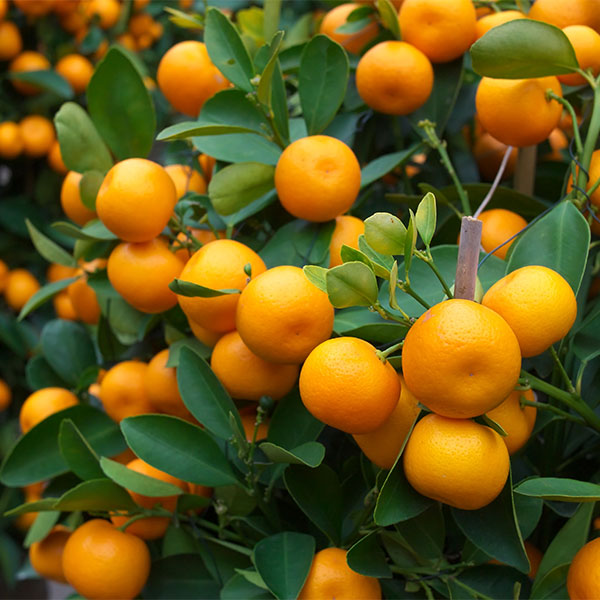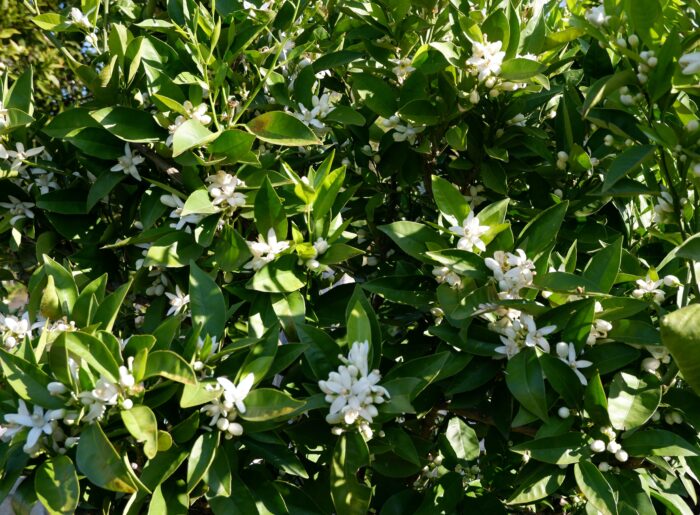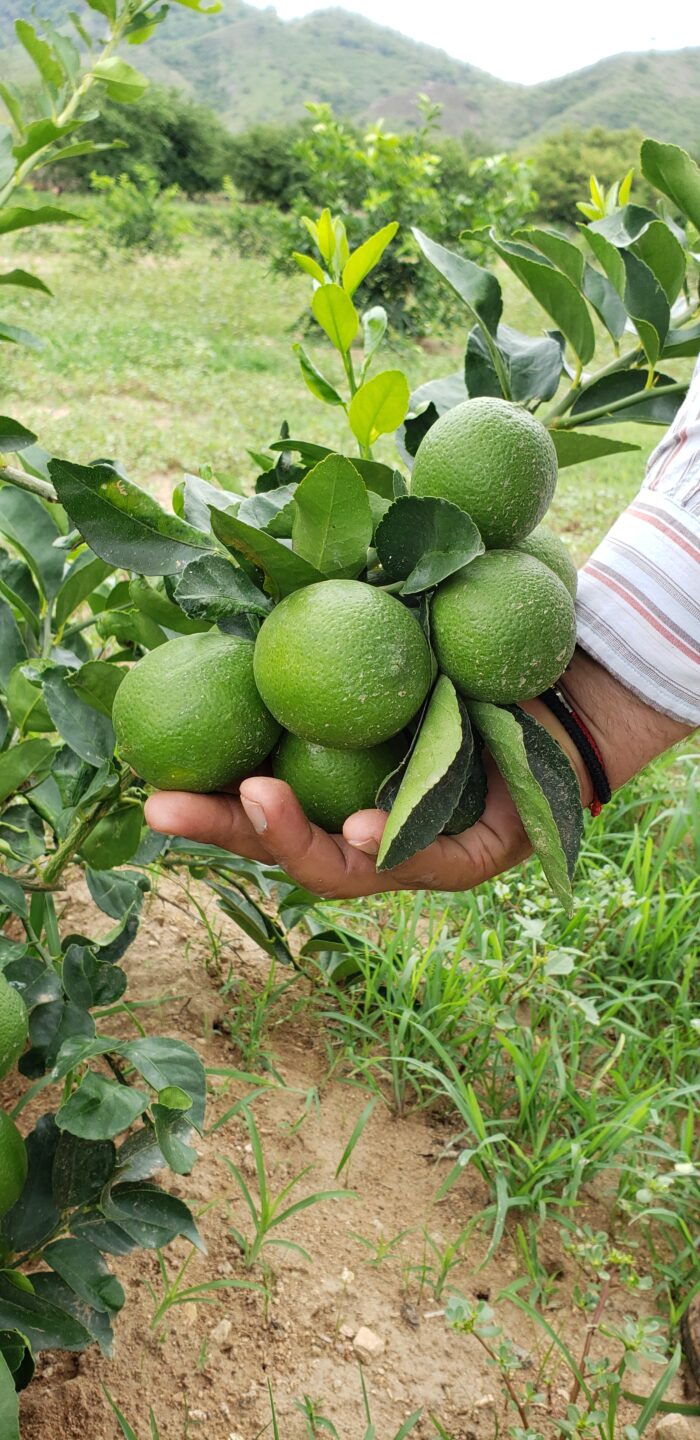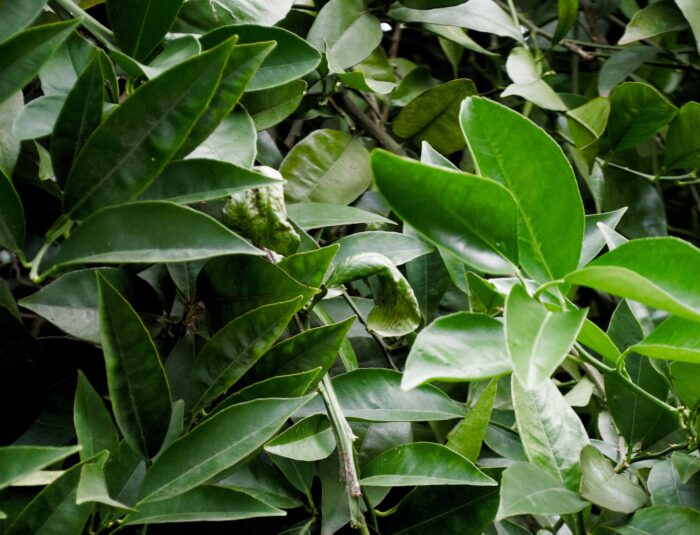
Asia gave the world citrus and the world gave citrus a whole lot more to contend with, in crop nutrition and pests and diseases. Dr Terry Mabbett reports on ways to cultivate healthy citrus trees, from sapling to harvest.
ACCORDING TO NUMEROUS findings, with the exception of grapefruit, mainstream commercial citrus (orange, mandarin, lemon, lime and pomelo) appears to have originated and evolved in Asia. Citrus is now the most widely cultivated fruit crop in the world being grown in the steamy Equatorial tropics to countries with Mediterranean-type climates like Spain, South Africa and South Australia, and almost everywhere else in between.
Mainstream commercial citrus species, including orange, lemon, lime, mandarin, grapefruit and pomelo have evolved through natural hybridisation over thousands of years. More recent ‘man-made’ hybridisation, breeding and selection have produced a much greater number of specialist fruits of which tangelo and ugly fruit are just two examples. Such a wide range of types grown and produced over such a wide area means nutrition, pest and disease incidence is clearly not a ‘one type fits all situation’.
When a plant species is taken from its natural distribution, and for citrus in South East and East Asia, and grown somewhere completely different it is invariably faced with a novel set of pests and diseases which take advantage of a tree which is struggling with and adjusting to novel growing conditions.
As a globally-grown fruit tree crop, citrus trees will inevitably be planted in a wide spectrum of soil types each with its own intrinsic plusses and minuses. With regard to minuses, the fact that citrus is an evergreen tree crop with a commercial life extending up to half a century or more, once the tree’s roots are established in the ground any inherent soil problems like lockdown and plant unavailability of soil zinc, which is one the more ‘essential’ of the essential micronutrients required by citrus, is a long-term, ongoing problem.
However, citrus is a true evergreen tree which maintains ‘full’ foliar cover throughout the year. The leaves are large, broad and deep green when healthy and with longevity spanning several years. New leaves are typically generated in bursts or flushes in response to changing seasonal conditions and controlled by changing environmental conditions including rainfall and temperature. As such citrus leaves are in a ‘good position’ to ‘tell’ the grower if all is not right with plant nutrition, the uniformly dark-green foliage showing distinct changes in colouration in response to deficiencies of specific essential nutrients.
Focus on foliar feeding
By the same token, citrus with its compact canopy and comprising large, broad leaves is the ideal target for foliar feeding through spray application of soluble nutrient formulations. And especially since flushes of new leaf growth on the outer canopy comprise leaves without fully-formed cuticles and wax blooms to permit the unobstructed and rapid entry of nutrients sprayed onto the leaves. Not only is citrus a commercial fruit tree crop that will benefit from foliar feeding but is the only logical way forward for a crop that is grown within an enormous range of soil and climatic conditions, and once in the soil with all its nutritional deficiencies is there for half a century or more.
Foliar feeding has progressed a whole lot further. Soluble nutrient products and crop nutrition programmes based on foliar feeding are now well established for a wide range of crops, including tree crops, and not just for greenhouse fruit, flowers and vegetables which is often the perception for foliar feeding.
To learn more about how soluble nutrients and foliar feeding can benefit citrus, one of the world’s most widely-grown fruit tree crops, Far Eastern Agriculture spoke with managing director Peter Prentis whose remit includes research, development and marketing of the company’s products in Asia. Peter told Far Eastern Agriculture how Omex has developed a range of soluble nutrient products that will benefit citrus from the tree seedling stage in the nursery to the skin finish of mature fruit ready for harvest.
Best place to start is at the beginning
Peter was asked about a well-known Omex product called Omex Bio 20, which is a full complement of nutrients with a natural seaweed component to stimulate root growth and boost overall plant biomass. “Omex Bio 20 gives plants a twin-boost by furnishing a full range of essential nutrients and a bio stimulatory effect to ensure maximum utilisation of the nutrients supplied. This highly concentrated emulsion product containing a full range of macro and micronutrients can be used at any time on citrus as a foliar spray at a concentration of 100 to 200 ml/100 l; 1.5 to 3.0 l/ha. However, Omex Bio 20 is especially useful for use on container-grown seedling plants in the citrus nursery and young trees newly planted in the field,” said Peter.
Foliar growth and reproductive development
Citrus trees are in the ground for a long time. First fruiting occurs within two to three years for grafted trees and five to seven years for trees grown from seed. Going forward, the grower can confidently expect many decades of good fruit production provided trees are well managed including good crop nutrition. Omex has a number of products which can be used throughout the seasons to ensure good flowering, fruit set and fruit development while maintaining foliar growth and leaf cover.
First on the agenda is a broad-based product to satisfy all the citrus tree’s nutrient needs throughout the year. Called Omex 3X Emulsion, this water-soluble fluid emulsion fertiliser contains the
three macronutrients, magnesium and the full range of micronutrients in chelated form. “We recommend up to four applications, the first given before flowering and the others at 14-day
intervals after flowering. Recommended rates are 1.5 to 3.0 l/ha with product sprayed at a concentration of100 to 200 ml/100 l,” said Peter.
According to Peter, Omex Micromax, a water-soluble fluid emulsion containing chelated micronutrients, magnesium and sulphur is also used in this way. “Applications of Micromax provide the crop with a balanced range of micronutrients which can be readily absorbed through the leaves following foliar spraying,” he confirmed. Omex recommends a trio of applications from bud formation to second leaf flush at a concentration of 150 ml/100 l and at a rate of 1.5 l/ha.

Onset of flowering in citrus with application of OMEX 3X Emulsion already underway at 14 day intervals.
Last but not least is a highly concentrated, water-soluble emulsion product called Omex NK60. The product contains nitrogen and a super concentration of potassium coming in at 39.0% weight/volume (w/v). According to Peter, potassium is the so-called ‘gatekeeper’ nutrient controlling water relations within the plant but also with an important role in photosynthesis and the translocation of sugars from the leaves. Omex recommends up to three applications at a concentration of 400 ml/100 l and a rate of 2.0 l/ha.
Zinc and manganese
When it comes to micronutrients, each and every crop has its ‘problem’ partners. All micronutrients are essential but some are more essential than others depending on the crop. In the case of citrus, it is zinc and manganese which tend to be the two micronutrients that are the most difficult to supply in adequate amounts via soil-based nutrition. Peter Prentis told Far Eastern
Agriculture about a specialist Omex product dedicated to citrus. “Omex Citromax 2.0 contains Zinc (3.80% w/v), manganese (5.00% w/v) along with sulphur (4.9% w/v) and amino acids. We recommend multiple foliar sprays (300 to 500 ml/100 l and at a rate of 3.0 to 5.0 l/ha) during the spring and summer months,” he added.
Fruit finish – citrus albedo breakdown
Harvest time trees may present themselves full of fruit but unmarketable if fruit quality is not up to standard. Citrus albedo breakdown is one of the biggest causes of poor fruit quality. Albedo is the specific name for the citrus fruit’s mesocarp which is the white spongy material found between the segments of the fruit and under the outer leather-like peel or flavedo. Albedo breakdown is caused by a loss of cohesion in the cells and this can lead to the rotting of the layer. Good calcium nutrition will minimise the risk of breakdown of the albedo tissue.
The one we recommend for citrus is Omex CalMax Ultra containing a full range of nutrients including calcium at 21.80% w/v. We recommend citrus growers make one to four applications applied at intervals of 10-14 days during the trees’ fruit formation phase. The product is applied at a concentration of 100 to 200 ml/100 l and at a rate of 1.0 to 2.0 l/ha,” said Peter.
According to Peter, the divalent calcium ion is notoriously ‘sluggish’ with inherent low mobility. Growers can boost the mobility of calcium by applying Omex CalMax Ultra in a tank mix with Omex DP 98. The product contains phosphorous as the phosphite ion which is known to assist the entry of calcium ions into the leaves and around the plant.
Increasing disease resilience
Citrus is prone to a huge range of fungal or fungal-like pathogens of which Phytophthora is the most universally important. A number of these soil-borne Phytophthora species including Phytophthora citrophthora cause a range of disease symptoms in citrus including stem infections at the base of the tree exuding sap and called gummosis, and brown rot of low hanging citrus fruit. In both cases, the disease inoculum is splashed up from the soil and onto the citrus tree.

Foliar feeding a balanced profile of soluble nutrients is essential throughout the fruit growth and development phase and right up to fruit maturation.
Phosphite ions are so-called elicitors which trigger the generation of natural chemicals in the tree to increase its resilience to infection and spread of Phytophthora disease. Peter Prentis said that the phosphite-containing Omex DP98 can be applied in this capacity to citrus as multiple spray applications starting from the first foliar flush and repeated every 10 to 14 days – at a concentration of 400 ml/100 l and rate of 4.0 l/ha or during spring as a soil drench applied to the root area at a concentration of 400 ml/100 l.
Phytophthora pathogens cause huge amounts of damage to citrus around the world but there are a number of bacterial and viral pathogens which cause more havoc and terminal disease where the only option for growers is to grub out their trees.
One of these and particularly prevalent in Asia is Huanglongbing (yellow dragon disease), previously known as citrus greening, and one of the worst diseases of citrus trees in the world. It is a bacterial disease caused by the plant pathogenic bacterium Candidatus Liberibacter asiaticus, which spreads through the tree canopy, causing the decline and then the death of the tree. Peter Prentis said that work carried out in the United States indicates so-called ‘phosphate starvation’ is linked to this disease. Subsequent research in California has led to the recommendations for the use of phosphite-containing products to increase the resilience of citrus trees to this bacterial disease.

